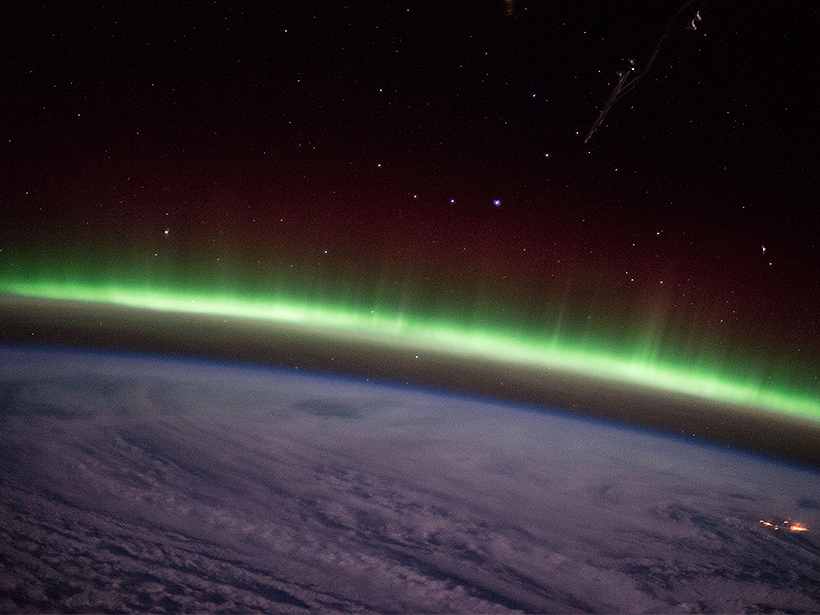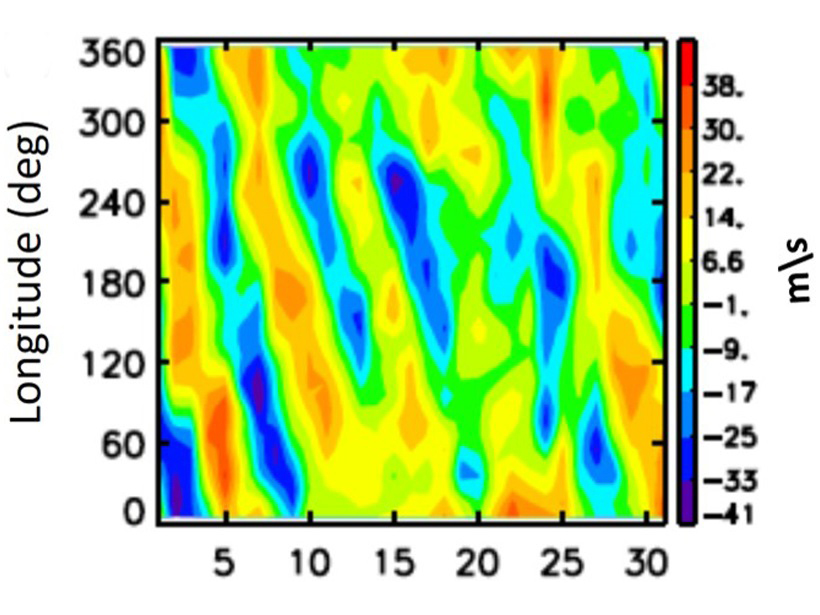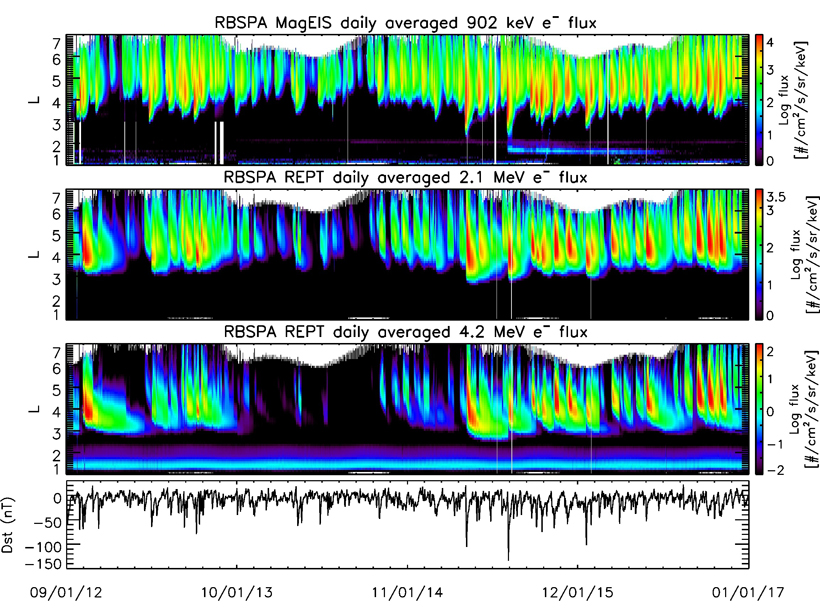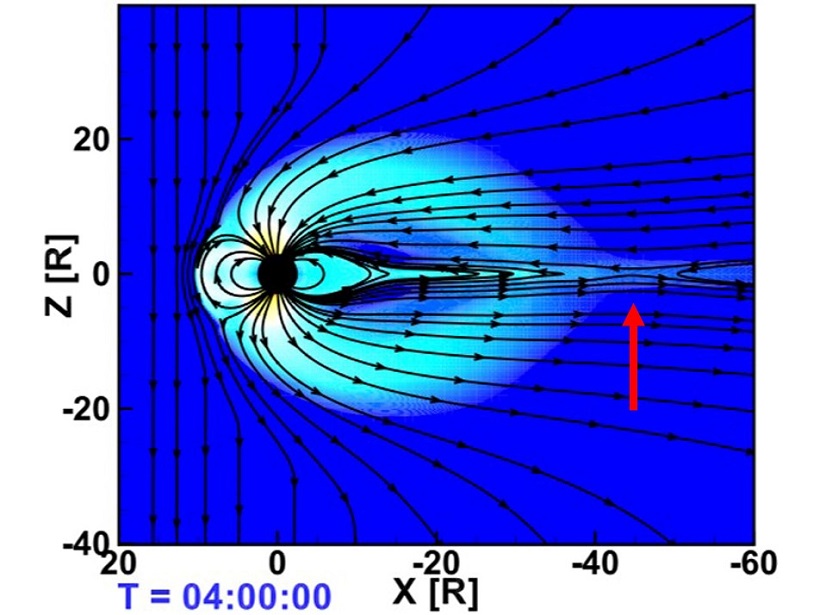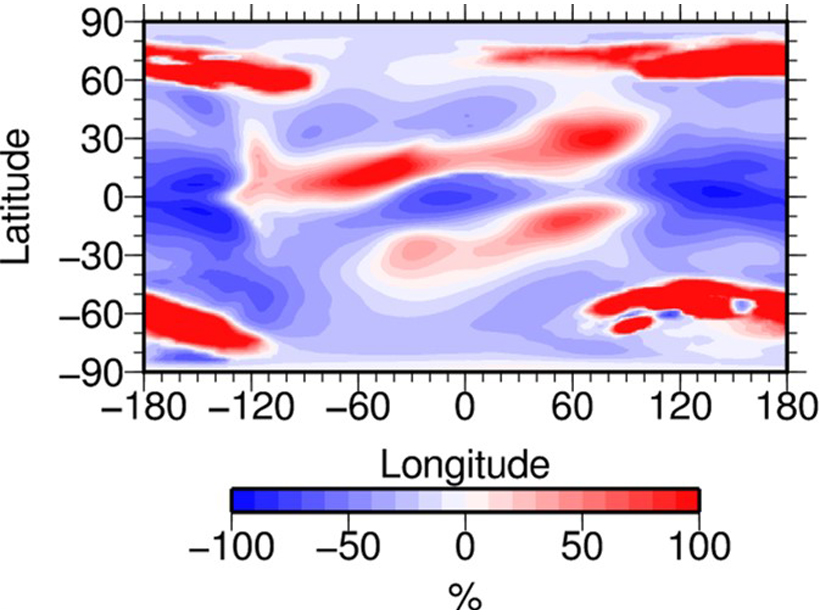Simultaneous satellite observations from different distances of Earth’s magnetic tail offer insight into how these instability waves evolve through time and space.
Journal of Geophysical Research: Space Physics
The Oxygen Neutral Cloud Surrounding Jupiter’s Volcanic Moon
Japan’s Hisaki satellite takes measurements of faint oxygen emissions from Io.
Mysterious Aurora Borealis Feature Explained for the First Time
High-speed particles cause indentations in the magnetopause to form “throat auroras.”
Tides and Waves Interact to Cause Hurricanes in Near-Space
The interaction of tides and waves generated in the lower atmosphere can cause the mean zonal wind speed in the lower ionosphere to oscillate equivalent to a category 1 hurricane at Earth’s surface.
A New Angle on the Earth’s Radiation Belts
A new empirical model of energetic electrons from Van Allen Probes data includes pitch angle analysis, revealing insights about radiation belt energization and loss processes.
Anatomy of a Flux Rope Hurtling Through the Solar System
Pancaking and erosion can explain a lot of the structural change in magnetic flux ropes as they fly evolve during their supersonic flight through the inner solar system.
How Heavy Oxygen Ions Escape Earth’s Gravity
A new study reveals that low-frequency electromagnetic waves accompany intense heating events at low altitudes.
Evidence That Earth’s Forehead Controls the Wagging of its Tail
Yes, Earth has a tail, a magnetotail, and there is debate about how much Earth’s upper atmosphere plays a role in the controlling the dynamics of this region of space.
Modeling Geospace: Quantifying the Known-Unknowns
Imperfect knowledge of high-latitude forcing of the coupled ionosphere-theremosphere system translates into uncertainty in the low-latitude and midlatitude response to a geomagnetic storm.
Fast CMEs Continue to Decelerate in the Outer Heliosphere
Most fast coronal mass ejections will be decelerated into ambient solar wind quickly in the inner heliosphere, but some of them continue the deceleration with an even larger amplitude beyond 1 AU.



